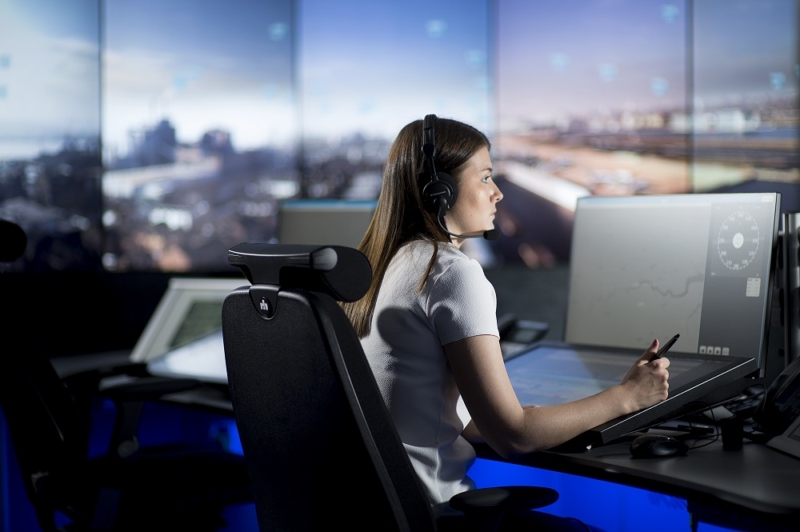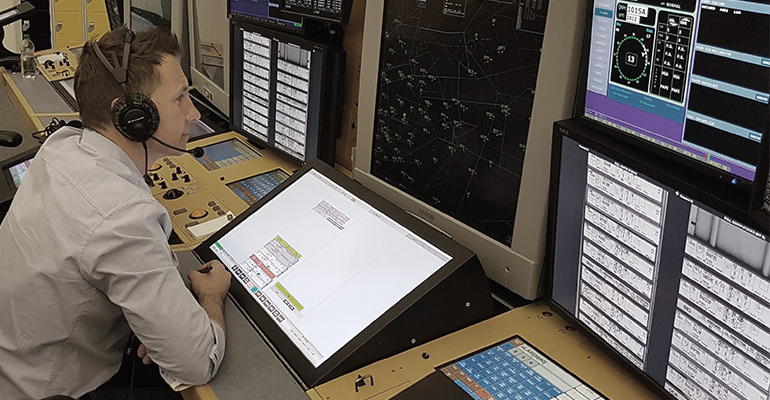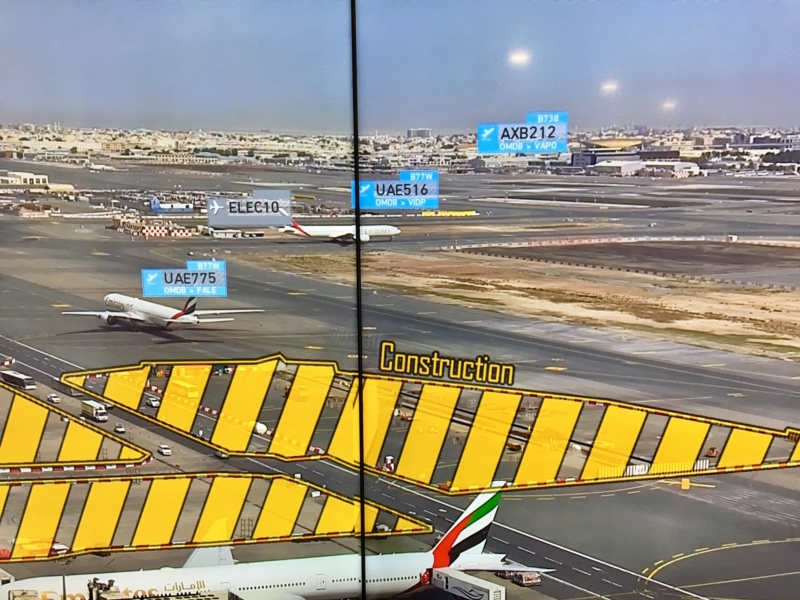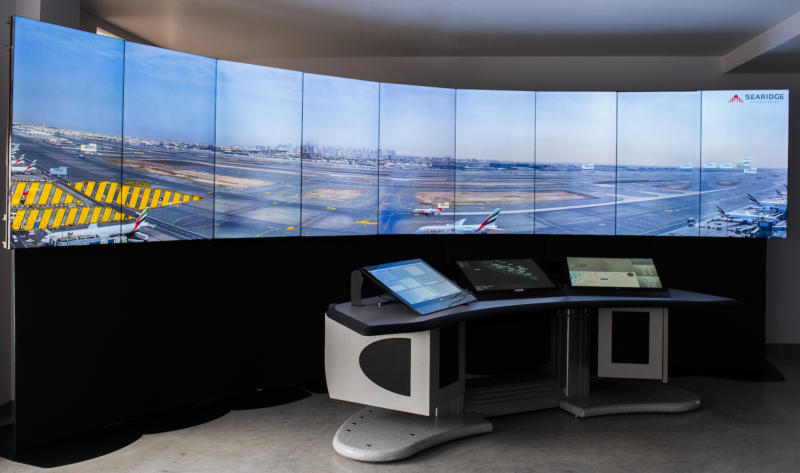Digital towers – your questions answered
1 March 2018Digital towers are one of the hottest topics around the industry at the moment, so last week we asked our LinkedIn followers to fire their burning questions at us for me to answer. So here they are, covering everything from safety and resilience to drones and training.
And don’t forget we’re at the World ATM Congress in Madrid next week, so if you’re there too come along to see us.
Gary Fieldhouse
I’ve been following the development of these solutions for a while now. I keep coming back to a single question, “What is the main benefit behind this move for civil aviation?” This can’t just be a cost cutting (reducing jobs), reducing risk (human error) exercise, can it?
Good question, Gary. The answer really depends on the airport and what they’re looking for, but all the airport’s I’ve spoken to are interested in how a digital tower could help enhance safety, operational efficiency, weather resilience or support a wider airport redevelopment. Digital towers are an opportunity to better integrate with the wider Airport Operations command and control network. It’s not a job-cutting exercise.
At London City for example, they’re going through a very exciting redevelopment but the amount of room they have is very limited. Moving to a digital tower will free up airside real-estate that could be used for any number of other uses, from new stands to better passenger facilities. In Singapore, where NATS has been asked to develop a smart tower prototype for Changi Airport, the drive is around using the tools a digital tower provides to improve safety and operational performance.
David Walters
Where does the Unmanned World fit into this type of digital tower? Do you plan to have infrastructure in place to manage and facilitate those?
I think the industry is still trying to find its way with drones. They’re no doubt a fantastically exciting development, but questions persist around how drones will eventually be integrated into the wider airspace. NATS is doing some really interesting work here, but in the meantime the immediate focus is around safety. Reports of drones flying near airports are going up every year, which is where a digital tower’s ability to pick up and then track objects as small as just a few pixels across could be really beneficial.
Graham Smith
What happens in poor visibility such as fog? Are the cameras infra-red? What redundancy is built into the system such as UPS, backup cameras etc? Can you guarantee there are no blindspots?
In fog, the operation would simply move to Low Visibility Procedures just as we do today. That means using radar and voice communication to safely continue controlling. Things like infra-red cameras are certainly a possibility for the future and something I know Searidge Technologies have been looking closely at.
In terms of redundancy, all digital towers would have to abide by the usual CAA guidelines, so that means double or even triple redundancy for the most vital systems. For instance, we are going to have three entirely independent dedicated data connections running from London City Airport to Swanwick Centre, all taking different routes through different pipes. For the cameras, in the event of a failure one of the independent pan-tilt-zoom cameras could immediately take over before a replacement is then fitted, something that takes about 15 minutes. And blindspots can absolutely be eliminated depending on the type of camera set up the airport wants. All control towers in use today have blind spots, and as airports develop they tend to get worse, with digital towers you can always give the optimal view without compromise.
Billy Adams
While the pictures of the operator’s desks are impressive, what’s in the guts of the thing? What infrastructure sits behind the displays? What level of backup power and resilience is there? Is it mostly wireless transponders? Is there autonomy and alternative data routing? Too many questions I know, but it is interesting .
More good questions, thank you Billy. I’ve covered elements of resilience above but in terms of power, the London City facility, for example, will benefit from being at Swanwick Centre that has multiple independent power sources, including more than one main connection, generators and batteries. At London City, diverse power, batteries and generators also support the system, but all the systems are hard wired for that additional safety and cyber assurance.
Antonio Locandro
In case of total system failure (no video feed) what would be the contingency considering controller won’t be near airport premises?
While that is a possibility, the way the system is designed makes it very unlikely, but in essence the operation would revert to very standard Low Visibility Procedures. Controllers would still have radar, voice comms and flight strips so it’s a normal mode of operation for them until on-site engineers would then get the system back up and running.
David Linford
My initial thoughts are not around the safety as I am more than confident that back up etc and ultimately divert would all have been very well planned and thought through. It is more of the human element/satisfaction! Today driving to the airport and the excitement of going into the control tower and being within the heart of an operation v driving to an industrial estate and working on a virtual system. Will it provide the same stimulant that current ATC staff thrive on?
As a former controller myself the buzz of an airport is something I really enjoyed but the vast majority of controllers in the UK already work in radar centres and rarely get to visit an airport. Even so I was sceptical about the whole concept of digital towers until I saw it working in real life. The quality of the screens and cameras, coupled with ambient noise means I’ve genuinely found myself forgetting that I’m not actually at the airport! And the current controllers who we’ve show the system to love the additional tools and improvements they’ll allow them to make. Absolutely it’s a change and one that will take time to get used to, but an exciting one.
And while we see little or no business case for anyone building another glass and concrete tower, we believe that a conventional tower can be ‘digitised’ by adding targeted digital features to enhance performance and safety, so it doesn’t necessarily have to mean the end of that drive to the airport…
Jalil Bhatti
Will there be a tandem system that will pick up or handle the short comings of a virtual system? What about the costs of running this said system? What will be the training differences of personnel as well as how is NATS looking to manage the costs to have a system like that?
There won’t be a tandem system, but as I’ve talked about previously, a digital tower will have back-ups and back-ups to back-ups for all of the most vital systems. All the work we do with airports in the UK is done under commercial contracts, so I can’t talk about costs, but a digital tower can absolutely be run at a lower cost than a conventional one, despite the added functionality. It really just depends on what the customer wants and needs and the level of resource required, but if it didn’t make operational or economic sense, the airport wouldn’t pay for it.
Training is a really good point. For the London City team, we’ll be starting to train them on the new kit in 2019 to help get them familiar with the new technology, how it works and the new viewpoint. However, they will still essentially be doing the same job they did before.
Scott Dunham
What types of sensors typically feed the screens besides standard cameras? Low light/IR/something else? How many different views of the airport can be selected? Are the surface and terminal radars (as available) able to support data tagging on the visible aircraft?
The main sensor a controller will be using are the cameras, but we’re also working with Searidge on the idea of using low light and IR as something that could enhance low visibility procedures and improve weather resilience. In terms of views, the beauty of cameras is you can theoretically have as many as you want wherever you need them around the airfield. The controller can then select either a panoramic view, or highlight a particular area of interest, a taxiway or remote stand for example. And finally, yes we can use radar, surface movement or otherwise, to tag aircraft on screen. That helps reduce ‘head down’ time and keeps a controller’s eye on the action.
Thanks to everyone who wrote a question. I hope my answers are useful and interesting.
Find out more
You can find out more about our digital tower capability in our feature: “Control without bounds – the rise of the Digital ‘remote’ tower‘. If you work for an airport and are interested in visiting one of our facilities, please contact us directly at [email protected].
Comments
Please respect our commenting policy and guidelines when posting on this website.






